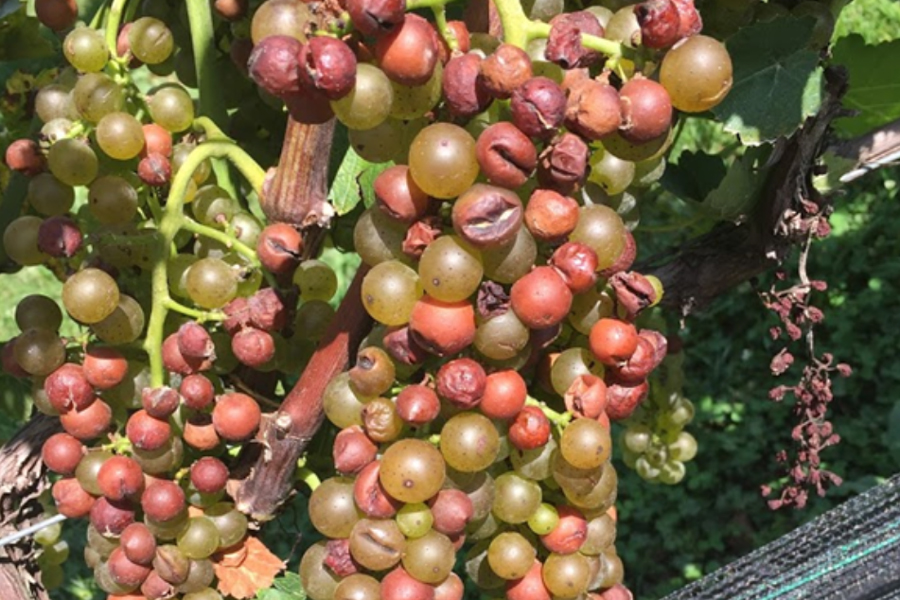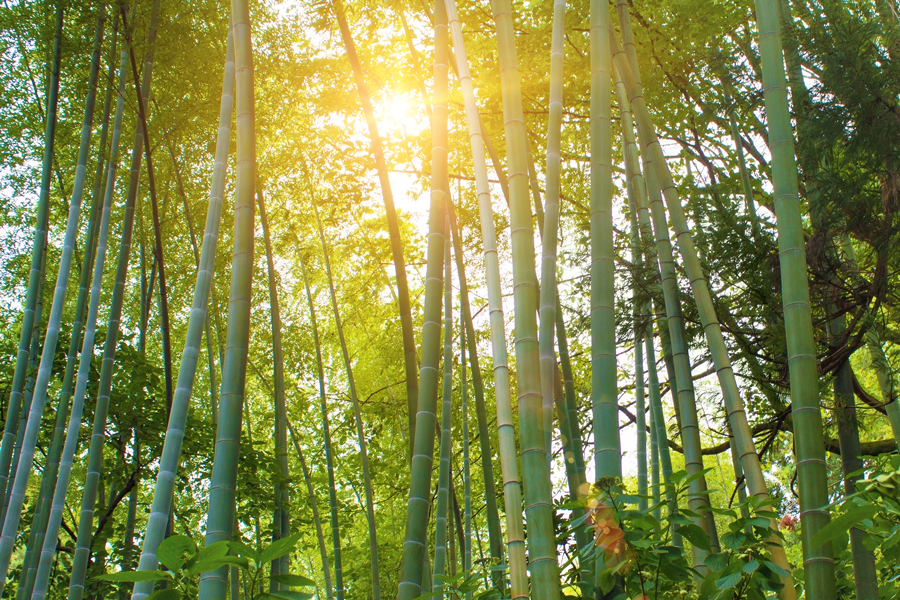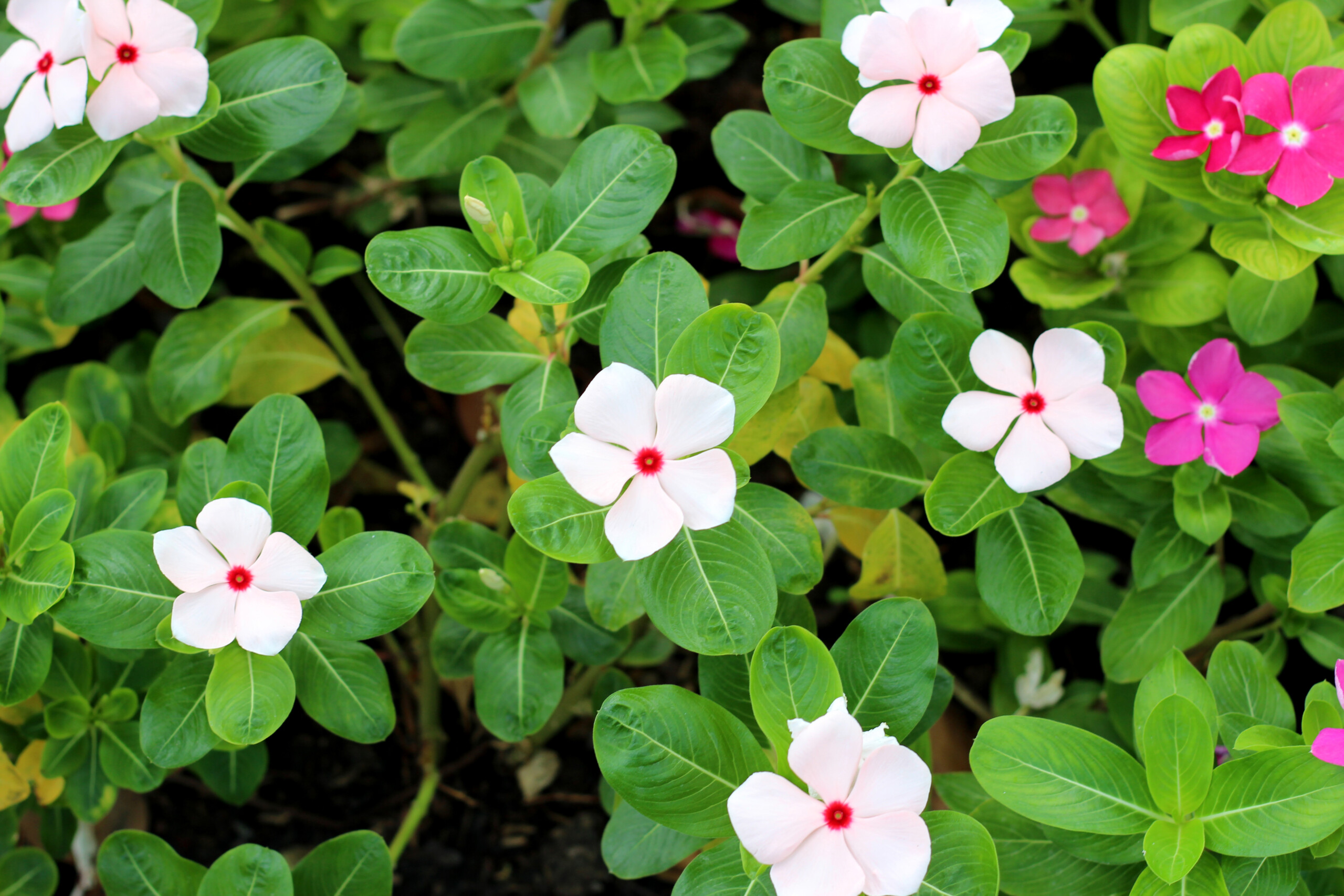Horticulture
-

C 1212
Grape Sour Rot
Although grape sour rot can occur in drier climates, the disease complex tends to be especially problematic during wine grape ripening in wet, humid regions. Browning and disintegrating berries and the aroma of vinegar (acetic acid) are a few symptoms that characterize grape sour rot. Sour rot ultimately results in crop yield reduction as damaged berries often “shatter,” or fall off the clusters. Sorting out clusters with sour rot that are not suitable for winemaking causes a further reduction in return revenues as less wine is produced. Although it has only recently been a topic of defined research, sour rot is a prominent concern in Eastern U.S. vineyards as: (1) it is consistently observed in vineyards, particularly in white-berried cultivars; and (2) questions remain about how to best manage it, particularly with the threat of insecticide resistance development in targeted fruit flies.
Phillip M. Brannen, Brett R Blaauw, Shane Breeden, and Sarah Lowder
|
-

Note: This publication contains data from an average of the 2020-21 and 2021-22 orange harvest seasons (exceptions noted in the chart). The commercial citrus industry in Georgia has only recently been established, with most groves planted after 2014. As of 2022, approximately 75% of the 3,300 acres of citrus planted in Georgia are satsumas, but that proportion is trending downward. To strengthen the new Georgia citrus industry, growers recently have begun to diversify their citrus varieties. Research is being conducted to determine how these varieties will perform under Georgia weather and soil conditions: which varieties can best tolerate Georgia’s winter weather, and what are the cultural norms such as maturation time, fruit quality, and insect and disease tolerance. This publication is associated with Circular 1275, the initial publication containing reference photos for the varieties tested.
Jake Price
|
-

B 1357
Growing Bamboo in Georgia
This resource provides a simple, user-friendly guide on growing bamboo in Georgia, a state that has a wide variety of soils and temperate zones.
Bodie V. Pennisi
|
-

B 737
Growing Ferns
This publication discusses everything you need to know about ferns: life span, growing, watering, potting, needs, and varieties.
Bodie V. Pennisi
|
-

B 790
Geraniums
Geraniums are among the most popular flowering plants grown in the United States. They are easy to grow and can be used in many types of gardens, such as ground beds, planter boxes, hanging baskets and pots. They are ideal for flanking entrance-ways and adding color to border plantings. This publication explains everything you need to know about growing geraniums.
Bodie V. Pennisi
|
-

Vinca is a specialty ornamental crop with very distinct requirements. This bulletin will address those requirements and cover a typical production schedule and crop budget.
Jean Williams-Woodward and Bodie V. Pennisi
|
-

There are two main trellising system categories: divided and single canopy. Jerry Watson, a grape grower and owner of Austin County Vineyards in Cat Spring, Texas, developed the divided canopy “Watson System” in 2002 to solve some issues he was having with bunch rot management and harvest inefficiency in his ‘Blanc Du Bois’ and ‘Lenoir’ vineyards. By adding a series of cross arms and catch wires to his high wire system, Jerry was able to improve spray penetration to the fruit zone and increase picking efficiency at harvest. The Watson hardware and wires separate clusters from the canopy foliage and limit cluster touching compared to a standard, single high wire system. The Watson system has since been employed in the Southeastern U.S. and can be found as far west as California. The Watson system is currently used for training hybrid and trailing grape cultivars such as, but not limited to, ‘Blanc du Bois’, ‘Norton’, ‘Lenoir’, ‘Lomanto’, ‘Crimson Cabernet’, and ‘Villard blanc’. A high wire-trained vineyard, such as those planted with ‘Chambourcin’, ‘Seyval blanc’, ‘Vidal blanc’, ‘Traminette’, and other cultivars could be retrofitted to Watson training with success. Future research will evaluate hybrid and Vitis vinifera cultivars that have yet to be evaluated for training on the Watson system.
Paula Burke, Rachel Itle, Jason Lessl, and Sarah Lowder
|
-

This resource provides information on the best vegetables to grow in Georgia gardens as well as planting dates and estimated time to harvest.
Bob Westerfield and David L. Linvill
|
-

The Athena bunch wine grape training system was developed by the University of Georgia to increase crop yield in modest-yielding cultivars. The Athena is a divided-canopy system retrofit to the industry standard single-canopy trellising system with vertical shoot positioning. Athena training involves laying four canes and dividing the canopy through a series of cross arms fastened to the vineyard posts in a V-shape. The goal of this publication is to educate new growers, seasoned industry members, and Extension agents on the Athena training system for bunch wine grapes.
Nathan Eason, Clark MacAllister, John Joseph Scaduto, and Sarah Lowder
|